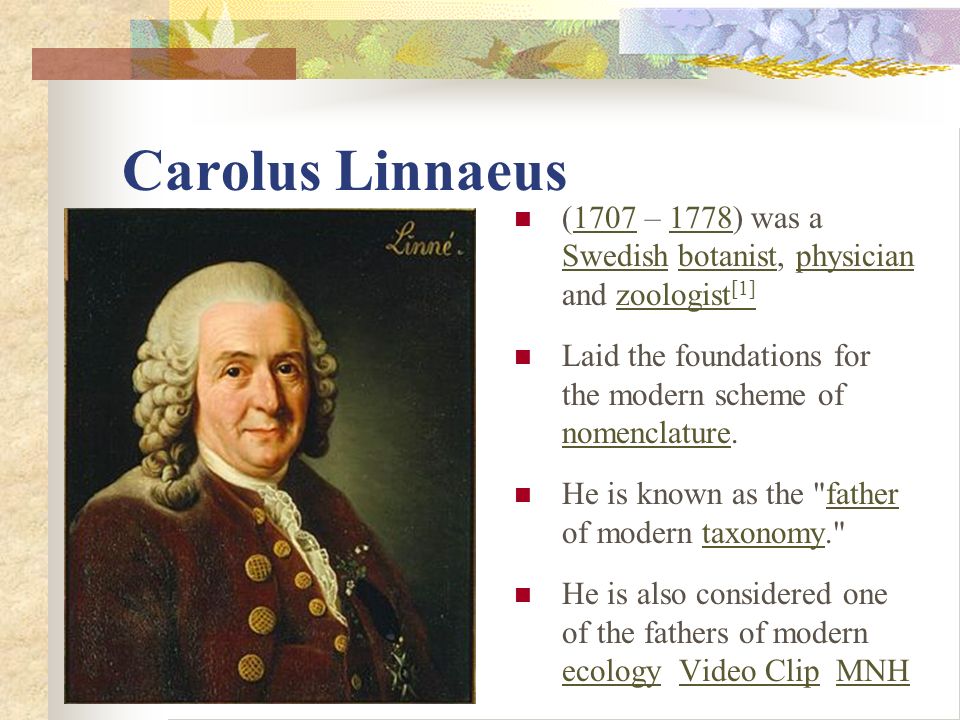And that was just plants. There was also all the fauna of the new worlds — kangaroos, kiwis, raccoons, bobcats, mosquitoes, and other curious forms beyond imagining. The volume of life on Earth was seemingly infinite, as Jonathan Swift noted in some famous lines:

His name was Carl Linne (later changed, with permission, to the more aristocraticvon Linne), but he is remembered now by the Latinized form Carolus Linnaeus. He was born in 1707 in the village of Rashult in southern Sweden, the son of a poor but ambitious Lutheran curate, and was such a sluggish student that his exasperated father apprenticed him (or, by some accounts, nearly apprenticed him) to a cobbler. Appalled at the prospect of spending a lifetime banging tacks into leather, young Linne begged for another chance, which was granted, and he never thereafter wavered from academic distinction. He studied medicine in Sweden and Holland, though his passion became the natural world. In the early 1730s, still in his twenties, he began to produce catalogues of the world's plant and animal species, using a system of his own devising, and gradually his fame grew.












